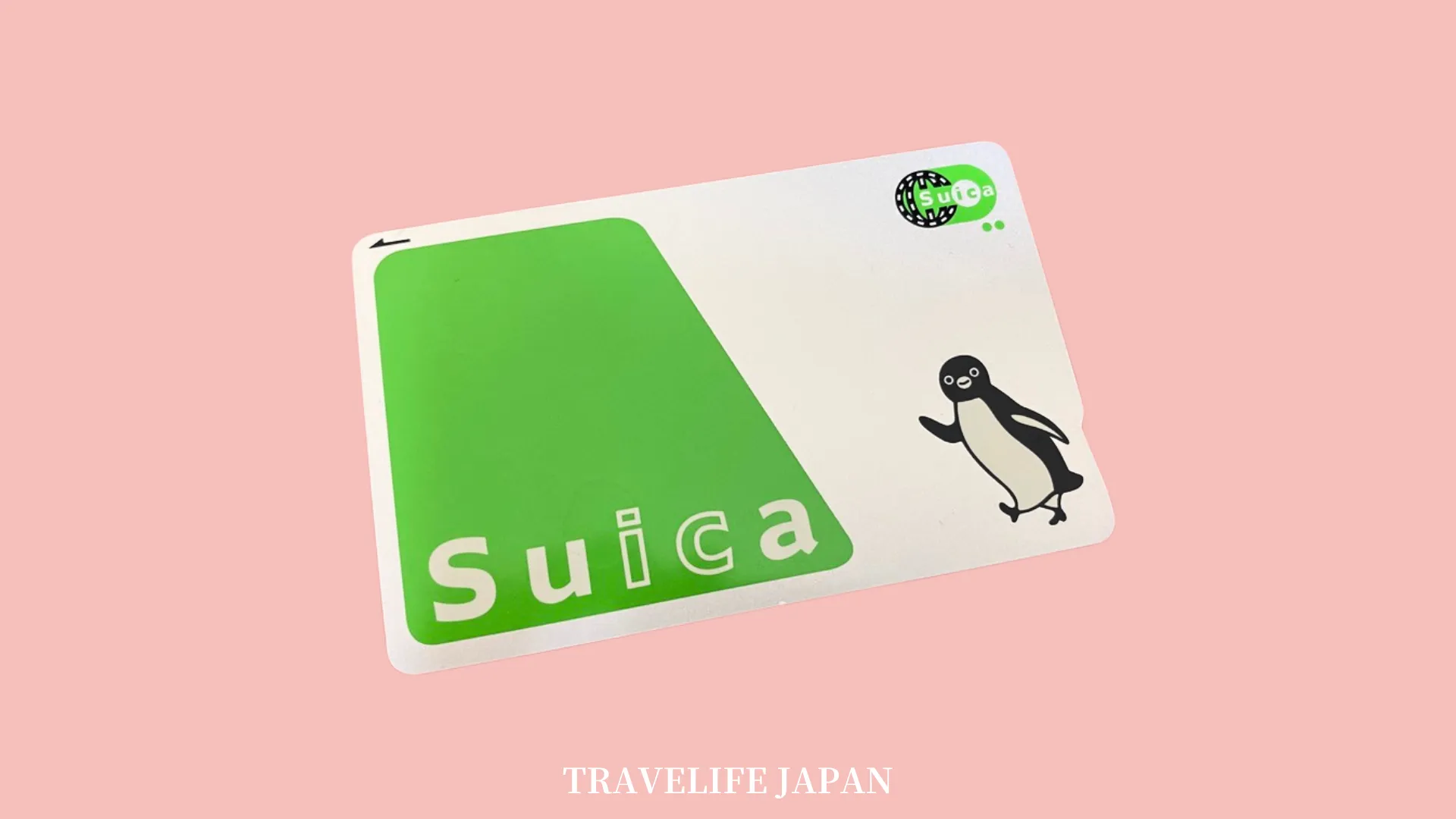Planning to navigate Japan’s vast public transport network? Our guide and recommendation on Transportation IC Cards, including Suica, PASMO, and ICOCA, offers insights to select the ideal card for your journey. Learn the benefits and conveniences of each, ensuring a seamless travel experience in Japan.
Want to learn Japanese in Japan?
Ask us any questions with free application support.
Fast and Easy!
Understanding Transportation IC Cards in Japan

Transportation IC Cards in Japan are more than just travel passes; they’re an integral part of the Japanese lifestyle, especially in urban areas. These prepaid rechargeable cards, utilized for public transport, are a testament to Japan’s advanced transportation infrastructure. Not limited to just trains and buses, these cards are accepted in a variety of settings, including convenience stores, vending machines, and even some restaurants.
The core advantage of these cards lies in their simplicity and convenience. Users can preload them with cash, eliminating the need for buying individual tickets or fumbling for change. This streamlined process not only speeds up the boarding of buses and entry through train station gates but also enhances the overall efficiency of public transit systems.
Moreover, these cards are interoperable across different regions and transit systems, thanks to the collaboration among various transportation companies. This interoperability means that a card purchased in Tokyo, for example, can be used in other major cities across Japan. Each card typically bears a unique name and features specific to the region it’s associated with, yet universally maintains ease of use.
10 Major Transportation IC Cards Across Japan

It’s noteworthy that there are 10 major Transportation IC cards, universally accepted across various transport networks in Japan, facilitating travel from one region to another without the need for multiple tickets or cards. When including local variants, the number expands to over 40 different kinds, each tailored to its area yet integrated into a vast, traveler-friendly network. This diversity and interoperability highlight the thoughtful design of Japan’s transport system, aiming to enhance the travel experience for everyone navigating its cities and countryside.
10 major Transportation IC cards
- Suica
Issued by JR East, Suica is arguably the most recognized card, particularly among tourists. Its extensive coverage includes not just the Tokyo area but also other regions in Japan. Suica’s compatibility with mobile wallet services like Apple Pay adds a layer of convenience for smartphone users. - PASMO
Primarily used in the Tokyo metropolitan area, PASMO is a versatile card that mirrors many of Suica’s functionalities. It is widely accepted on various private railways and buses throughout the Kanto region. - Kitaca
Exclusive to Hokkaido and centered around Sapporo, Kitaca facilitates travel in Japan’s northernmost island. It’s particularly useful for tourists exploring Hokkaido’s scenic landscapes. - TOICA
Operated by JR Central, TOICA is the card of choice in the Tokai region. It is particularly handy for those traveling on the Tokaido Shinkansen, connecting Tokyo and Osaka. - ICOCA
ICOCA, issued by JR West, serves travelers in the Kansai region, including cities like Osaka and Kyoto. Its widespread acceptance makes it a convenient tool for both local commuters and tourists. - PiTaPa
Unique for its post-pay system, PiTaPa is predominantly used in the Kansai area. Unlike other prepaid cards, it bills users at a later date, making it a novel choice for residents. - manaca
Serving the Chukyo region, manaca is integral to navigating the Nagoya metropolitan area. This card simplifies travel across various local transit systems. - SUGOCA
Embraced by travelers in Kyushu, SUGOCA, issued by JR Kyushu, covers key areas in this southern region of Japan, including Fukuoka, Nagasaki, and Kagoshima. - hayakaken
Fukuoka’s local card, hayakaken, is essential for navigating the city’s subway system. It also finds utility in day-to-day transactions at stores and vending machines. - nimoca
Widely accepted across Kyushu, nimoca is not just for transport but also for shopping, making it a handy companion for residents and visitors alike.
Why Suica is the Go-To Choice for Many in Japan
Suica, offered by JR East, is a standout transportation IC card in Japan, favored for its convenience, coverage, and particularly its high point return rate. Here’s a deeper look into why Suica is often the top pick:
- Extensive Coverage and Accessibility
Suica’s coverage extends well beyond Tokyo, spanning across many regions in Japan. This wide acceptance makes it highly convenient for both daily commuters and travelers exploring various parts of the country. - User-Friendly and Efficient
The tap-and-go functionality of Suica cards streamlines the transit process, eliminating the need for buying individual tickets. Easy to purchase and recharge, Suica offers a hassle-free experience for all users. - Integration with Mobile Technology
Suica’s compatibility with smartphone wallet services like Apple Pay and Google Pay enhances its utility. This feature allows users to convert their smartphones into a digital Suica card, facilitating easy top-ups and usage tracking. - Versatility in Usage
Beyond transportation, Suica is accepted in a variety of commercial settings, including convenience stores, vending machines, and select retail outlets, making it a versatile payment tool in daily life. - Ideal for Tourists
Suica cards are readily available at JR stations and come with instructions in multiple languages, making them incredibly tourist-friendly. - High Point Return Rate
One of the most attractive features of Suica is its lucrative point return system. When linked with JR East’s unique point program, “JRE POINT,” users can accumulate points quickly. The rate of accumulation varies based on the type of Suica and the nature of the transaction. For instance, physical Suica cards offer a 0.5% return rate on local trains, and Mobile Suica offers up to a 2% return rate. This system makes it a financially rewarding option for frequent users.
To further capitalize on Suica’s benefits, pairing it with a compatible credit card is an excellent strategy. This combination enhances the value and convenience for users:
- Increased Point Accumulation
Certain credit cards, when linked with Suica, offer higher point accumulation rates. This is especially beneficial for frequent travelers who can earn more rewards on their travel and everyday purchases. - Auto-Charging Feature
Suica-compatible credit cards often come with an auto-charge function. This ensures the Suica card is automatically reloaded when the balance dips below a set threshold, providing uninterrupted travel convenience. - Access to Exclusive Offers and Services
Owners of specific Suica-compatible credit cards, such as the View Gold Plus Card, can enjoy exclusive services like free airport lounge access, adding luxury to the travel experience. - Simplified Expense Management
Linking a Suica card to a credit card helps in consolidating travel expenses for easier tracking and management. - Special Promotions and Rewards
Credit card companies often offer promotions and additional rewards for using their card in conjunction with Suica, such as cashback offers or travel-related discounts.
Combining Suica with a compatible credit card not only makes traveling more convenient but also more rewarding, allowing users to maximize the benefits of their travel expenditures in Japan.
Refund Option of the Transportation IC Card in Japan
In Japan, most transportation IC cards like Suica, PASMO, and ICOCA offer a refund option. To get a refund, you typically need to visit a ticket office at a train station that is operated by the issuer of the card. For example, for a Suica refund, you should go to a JR East station.
When you request a refund, the remaining balance on the card is returned to you. This includes any initial deposit made at the time of purchase. However, be aware that a handling fee is usually deducted from the refund amount. The fee varies by card but is often around 220 yen for cards like Suica and PASMO.
If your IC card has expired, which usually happens 10 years after the last transaction, the refund process might be slightly different, often requiring assistance from a customer service representative.
For those who have a small balance left and don’t want to go through the refund process, the card can still be used to make small purchases at places like convenience stores and vending machines.
It’s important to remember that refund policies can vary, especially for tourist-specific IC cards, which may have different conditions. Always check the latest information or inquire directly at the relevant train station or customer service center.
Conclusion
Choosing the right Transportation IC Card in Japan is more than just a matter of convenience; it’s about enhancing your travel experience in one of the world’s most efficient public transportation systems. With the insights provided in this guide, you’re now equipped to select a card that not only suits your travel itinerary but also offers ease of use, financial benefits, and compatibility with your lifestyle. Whether you’re commuting daily or exploring Japan’s vibrant cities and quaint countryside, your chosen IC card will be an indispensable companion, ensuring every journey you embark on is smooth and hassle-free.
\ Follow Our Community /
STUDY IN JAPAN
INQUIRE NOW
Want to learn Japanese in Japan?
Ask us any questions with free application support.
Fast and Easy!








